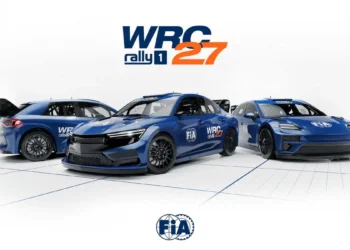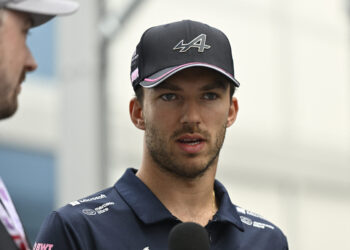Charles Leclerc’s Stunning U-Turn on the Controversial 2026 F1 Cars: What Changed?
In a surprising twist that has left fans buzzing, Ferrari’s star driver Charles Leclerc has dramatically softened his stance on the much-anticipated 2026 Formula 1 cars. Earlier this summer, the Monegasque driver openly criticized the futuristic machines during a simulation run, but now, he’s ready to embrace the challenge they present.
Leclerc, who was among the first to voice his concerns, had labeled his initial experience with the new car as less than favorable, stating he was “not a fan” of the drastic changes from the current models. These upcoming vehicles will be governed by a revolutionary set of technical regulations, demanding a complete overhaul of driving styles due to significant shifts in aerodynamics and energy management, ushered in by the new 50-50 hybrid power units.
With the Qatar Grand Prix fast approaching, Leclerc has taken a moment to recalibrate his thoughts on the situation. “I enjoy the challenge of thinking differently,” he declared to the media, demonstrating a newfound enthusiasm for the change. The initial shock of the simulation session has evolved into a stimulating brainstorming process at the Ferrari factory, where engineers and drivers alike are collaborating to tackle the challenges posed by the 2026 regulations.
“The process of really thinking as a group in what clever ways we can find in order to tackle some issues that we’ll have with next year’s car has been a very interesting process,” Leclerc noted. His comments highlight the collective effort within the team to adapt and innovate, revealing an underlying excitement about the upcoming season.
However, not all concerns have been alleviated. The authenticity of overtaking maneuvers has emerged as a significant issue, with drivers now needing to engage new overtaking modes that could deplete battery energy. This raises the question: will drivers be able to fend off rivals after using these energy-draining tactics, or will the essence of racing be compromised?
Leclerc remains cautiously optimistic but acknowledges uncertainty regarding the driving experience. “For the enjoyable part of driving in itself, I’ll have to wait and drive the real car before saying anything,” he admitted. The nuances of the simulation can’t fully capture the thrill and intricacies of real-world racing, leaving fans and drivers alike eager for the actual showdown.
As the countdown to the 2026 season begins, Leclerc’s evolution from skepticism to intrigue is emblematic of the broader challenges and adaptations facing Formula 1. The stakes are higher than ever, and as drivers gear up for a new era in motorsport, one thing is certain: the thrill of the race is about to be redefined. Stay tuned as we follow Leclerc and his Ferrari team into this uncharted territory, where every twist and turn could reshape the future of Formula 1 racing.










